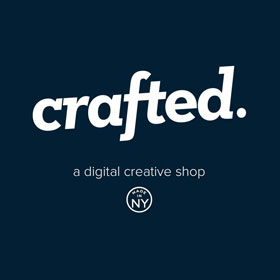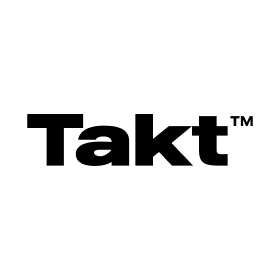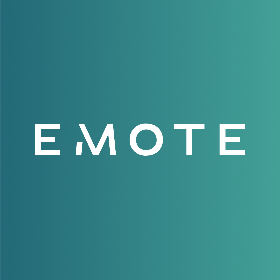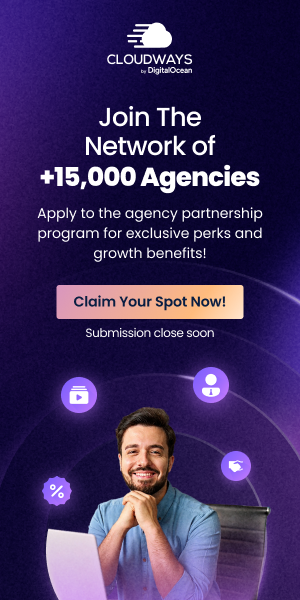
Importance of Marketing for Media Software Companies
Marketing is critical for media software companies for several reasons
First, marketing helps drive brand awareness and recognition. In a crowded software marketplace, companies need to differentiate themselves and make potential customers aware of their unique value proposition. Effective marketing builds mindshare and top-of-mind recall for a brand. This is especially true about content marketing – 79% of marketers believe brand content postings are the most effective way to raise brand recognition, while 59% of consumers prefer to buy products from brands they trust and about which they know more thanks to marketing.
Second, marketing is essential for customer acquisition. Software companies rely on marketing channels like content, social media, events, and advertising to reach new prospects, educate them on solutions, and convert leads into customers. Without marketing, companies would have a very difficult time getting their software in front of the right buyers.
Third, marketing nurtures and retains existing customers. Existing customers are a company’s most valuable asset. Marketing helps keep customers engaged and informed of new developments like product updates, new features, events, and thought leadership. This strengthens the customer relationship over time.
Fourth, marketing drives sales revenue growth. At its core, marketing generates leads and moves prospects through the sales funnel to become customers. The more effective the marketing, the more pipeline and revenue a software company can produce. Investing in marketing provides leverage and scale for revenue growth. What’s more, companies with strong sales and marketing are 67% more effective at closing deals and 58% better at retaining customers. Therefore, marketing and sales always go hand in hand.
In summary, marketing is a growth engine for media software companies. From building awareness to generating demand and retaining customers, marketing provides the fuel for acquiring and expanding customer relationships. For software companies looking to grow in a competitive market, a strategic marketing approach is essential.

Understand Your Target Audience
Developing a deep understanding of your target audience is crucial for media software companies. This involves thoroughly researching the demographics, needs, behaviors, and preferences of your ideal customers. Surely, those who order ready-made media software from a media software development company like Luxoft can keep calm and relish a product that was created taking into account the target audience. But if not, here are a few steps you can take to identify your “perfect customer”.
Start by identifying your target market segments. Who are the key decision-makers using your software? Are you targeting individuals like video editors, photographers, designers or companies and organizations? Get as granular as possible in defining the profiles of potential customers.
Analyze the problems your product solves for these customers and how it benefits them. What goals are they trying to achieve? How can your software save them time, and money or help them achieve better results? Understanding the jobs, motivations and frustrations of potential buyers allows you to tailor messaging and marketing.
Create detailed buyer personas representing your target segments. Include key demographics like job title, industry, and company size as well as behavioral data like goals, challenges, objections and preferred content formats. Give your personas names and photos to make them more memorable and human.
Regularly conduct market research through surveys, interviews and focus groups to gain insights into how your audience consumes information and makes buying decisions. This allows you to refine your personas over time.
By thoroughly understanding target customer needs, motivations and behaviors, media software companies can craft marketing that truly resonates. Tailored messaging helps convert qualified leads into long-term customers.
Focus on Search Engine Optimization
Search engine optimization (SEO) is critical for media software companies to get their products and services in front of potential customers. With the right SEO strategy, companies can increase organic traffic to their website and improve brand visibility. 60% of marketers say that SEO is the highest quality source of leads.
Some key SEO tactics for media software companies include:
Keyword Research
Conduct thorough keyword research to identify high-volume, low-competition keywords that prospective customers are searching for. Look at keyword difficulty tools to find long-tail keywords specific to your offerings. Prioritize keywords that have good search volume and low competition levels. Optimize your site content around these keywords. The average keyword gets 989 searches per month – that’s a pretty great result for a company that wants to develop with SEO.
On-Page Optimization
Optimize all pages on your website, especially your home page and product/service pages, for your target keywords. This includes using keywords in title tags, meta descriptions, headers, image alt text, page URLs, etc. Ensure your website is mobile-friendly and loads quickly.
Content Creation
Regularly create fresh, high-quality content that incorporates your target keywords and provides value to your audience. Focus on long-form content like blog posts, guides, and videos to improve dwell time. The most effective forms of content marketing are still organic posts on social networks and email marketing.
Backlink Building
Build backlinks from relevant websites to signal search engines that your site is authoritative and trustworthy on your industry topics. Guest post on industry blogs, partner with influencers, and promote your content to earn backlinks.
Local SEO
Optimize your GMB and NAP listings so customers can find your business in local searches. Encourage customer reviews. Create location pages and optimize for local keywords.
With the right SEO strategy tailored to media software, companies can increase organic visibility, traffic, and leads over time. SEO is an ongoing process that requires continual optimization and improvement.

Leverage Social Media Marketing
Social media marketing is essential for media software companies to build brand awareness, engage with customers, and drive website traffic. Having active social media accounts on platforms like Facebook, Twitter, LinkedIn, Instagram, YouTube, and Pinterest allows companies to directly interact with current and potential users. In 2024, there are estimated to be 5.17 billion total social media users worldwide. So it’s logical not to abandon these means of promotion. Monitoring social media listening tools helps understand customer sentiment, complaints, questions, and feedback. Paid social media ads can further amplify reach to targeted demographics.
Key social media marketing tips for media software companies include:
- Create social media profiles on relevant platforms and keep them updated with compelling content like behind-the-scenes footage, product teasers, employee spotlights, relevant industry news, contests etc.
- Monitor social listening tools like Hootsuite, Sprout Social, Mention etc. to analyze mentions, hashtags, reviews, and conversations. This provides customer insights.
- Run paid ads on social media platforms to promote content, offers, discounts etc. and retarget potential leads. Split test ad variations.
- Engage followers by responding to comments, questions, and feedback in a timely manner. Have someone dedicated to social media engagement.
- Post content regularly, including repurposing blog posts as native social content. Mix text, images, infographics, videos etc.
- Use hashtags related to your industry for more visibility. Participate in Twitter chats relevant to your market.
- Collaborate with influencers in your space to reach their audience and boost credibility.
- Benchmark key social media metrics like follower growth, engagement rate, click-through rate, conversion rate etc. to refine strategies.
- Consider running contests and sweepstakes to boost followers and engagement. Offer discounts for sharing or following.
- Use social media analytics tools to identify the best times to post, top performing content etc. and create an optimal posting schedule.
Leveraging major social networks strategically can significantly expand reach and connect with target audiences for media software companies.
Create Engaging Content
In today’s crowded digital landscape, simply having a website is not enough to attract and retain customers. Media software companies need to consistently create engaging content that provides value to their target audience. This content should aim to educate, entertain, and inspire potential customers.
Some of the most effective types of content include:
- Blogs: A regularly updated blog that provides tips, insider knowledge, or helpful guides related to your industry can position your company as a thought leader. Share insights from your expertise, cover trending topics, or explain key concepts.
- Videos: Short, fun videos allow you to connect with your audience in a more personal way. Consider creating videos to demonstrate your software, provide how-tos, or showcase customer success stories.
- Webinars: Hosting live or recorded webinars is a great way to share in-depth knowledge. Webinars also allow leads to get to know your subject matter experts.
- eBooks or Guides: Long-form content like guides and ebooks lets you really delve into a topic. Include actionable takeaways so readers gain value. Offer gated content in exchange for lead generation.
- Infographics: Visually appealing infographics can make your content more engaging on social media. Identify interesting stats from your industry to share.
The goal is to consistently provide media software users with content that is helpful, educational, or entertaining. This content should ultimately convey your brand voice, area of expertise, and unique value proposition. Put effort into high-quality content creation and promotion to attract your ideal customers.
Attend Industry Events and Conferences
Attending relevant industry events and conferences is a great way for media software companies to network, promote their brand, and gain valuable insights. By having a presence at these events, companies can connect directly with potential customers, partners, affiliates, and influencers.
Some key benefits of attending industry events include:
- Networking opportunities: Events provide a chance to meet and build relationships with industry peers, potential customers, affiliates, and influencers. These connections can lead to future partnerships, referrals, and sales.
- Brand awareness: Events offer visibility to promote your brand and interact with your target audience. Consider having a booth, sponsoring an event, speaking on a panel, or hosting an event to increase brand exposure.
- Lead generation: Many events allow participants to collect leads by exchanging business cards or scanning badges. These leads provide sales teams with warm prospects to begin nurturing relationships.
- Market research: Events offer insights into industry trends, challenges, and innovations. Attendees can gather intel on competitors, view product demos, and learn about customer pain points.
- Recruiting opportunities: Conferences attract top talent across the industry. Companies can scout potential hires by networking or hosting a recruiting event.
- Customer feedback: Events provide direct customer access to gather feedback through surveys, focus groups, or casual conversations. This input helps guide product development.
- Industry visibility: Having a presence raises a company’s profile among industry influencers, analysts, and media. This visibility can drive interest in products and services.
The key is developing an event strategy that aligns with overall marketing objectives. Companies should carefully select conferences that reach their target audience and allow insightful networking. With a strategic approach, events offer a prime channel to build brand awareness, connect with customers, and stay atop industry trends.

Leverage Influencers and Affiliates
Partnering with influencers and affiliates is a powerful way for media software companies to expand their reach and get in front of new audiences. Influencers are individuals with an established credibility and audience in a particular niche. They can help amplify your brand through sponsored content, reviews, social media posts, and more. Identify influencers in your industry who create content for your target customers. Offer them discounts or free access to your software in exchange for an honest review.
Affiliate marketing is another effective growth strategy. Create an affiliate program and allow others to promote your software and earn a commission on sales or leads generated. Successful affiliates already have an audience interested in media software so leveraging that can significantly grow your customer base. Make sure to provide affiliates with promotional materials and assets to help convert their followers into customers.
The key is to identify influencers and affiliates that genuinely use and like your software. That way their endorsements will come across as authentic. When leveraged correctly, influencer and affiliate marketing provides powerful word-of-mouth promotion at scale.
Consider Paid Advertising
Paid advertising can be a powerful way for media software companies to complement their other marketing efforts. Some forms of paid advertising that are worth considering include:
Pay-Per-Click (PPC)
Pay-per-click (PPC) advertising allows you to place text ads on search engines like Google and Bing. You only pay when someone clicks your ad. PPC is great for generating leads and visits to your site. Carefully target your ads around keywords prospective customers are searching for. Optimize your ads and landing pages for conversions.
Display Advertising
Display ads enable you to reach users as they browse websites and apps. You can create graphical banners, text ads, and video ads and place them on high-traffic sites your audience visits. Target your ads based on user demographics, interests, and browsing behavior.
Retargeting
Retargeting involves serving ads specifically to people who have already visited your website. For example, if someone visits your software product page but doesn’t purchase, you can remind them about it later through retargeted ads. This brings valuable visitors back and increases conversion rates.
Video Advertising
Pre-roll and mid-roll video ads on YouTube, streaming services, and social media are a compelling way to reach relevant audiences. Short promotional videos allow you to tell your brand story. Ensure your ad aligns with the surrounding content.
Native Advertising
Native advertising seamlessly blends ads into the design of the platforms they appear on. For instance, you could publish promotional articles and videos as “sponsored content” on industry blogs and publications. This feels less intrusive than banner ads.
A strategic paid advertising plan, combining various formats across multiple channels, can amplify a media software company’s marketing. Continuously test, measure, and optimize your paid campaigns.

Measure and Optimize
Analytics and A/B testing are critical for measuring the effectiveness of your marketing efforts and optimizing them over time. You should implement analytics tools like Google Analytics to track key metrics such as website traffic, leads generated, sales completed, and ROI of campaigns.
Analyze which marketing channels are driving the most valuable customers and invest more in those high-performing channels. Pay attention to the customer journey to see which marketing and sales funnel steps you can optimize to improve conversions.
Run A/B split tests on elements like email subject lines, landing pages, website copy, CTAs, pricing, and more. The goal is to continually iterate and improve performance over time. You may be surprised by what slight changes make a big difference.
It’s also important to regularly check your website SEO and make sure you aren’t losing rankings for important keywords. Keep producing fresh, high-quality content to maintain authority and relevance.
Marketing optimization is all about analyzing data to gain insights into what’s working. Then, double down on what’s most effective while cutting out what isn’t. This process of constant refinement will ensure you get the maximum ROI from marketing spend.

























